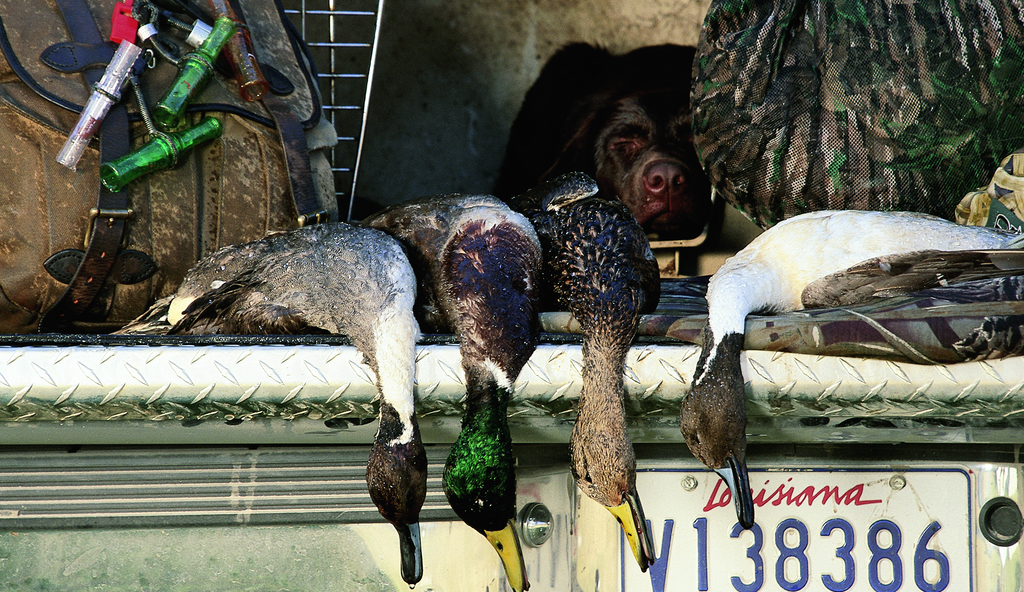Haydel's Blog
Dare to be Different!

The scene is a duck hole-Anywhere, USA. Two guys are telling their lies about ‘ol Mr. Buck when all of a sudden one looks up and sees 20 mallards locked up with landing gear down and 45 yards to the southwest of their spread. “GET DOWN!” and he reaches for his call…What’s wrong here?
It’s time to pick up the gun not the call! I must say that I have been guilty from time to time as well. Fact is we all like to call and feel like we are the ones responsible for bringing those birds in. Kind of builds ones confidence if you know what I mean. But sometimes the best call is not to call at all.
There is more to attracting ducks to you than calling. Decoys play a huge part obviously; but let’s take it from Mr. Mallard’s point of view. From Canada to you he flies south looking for food and company. He sees an average of 20-40 friends in a nice hole. They invite him over only to be shot at. He is a quick learner though and soon says the heck with it. I have found at these times; it’s more productive to be different. Use different species of decoys not just mallards. Don’t laugh but I like using some spoonbill decoys where I hunt. It works wonders on pintail! I personally only use about 1/3 mallards with the remainder a mix between pintail, widgeon, teal, blacks, and even coots. Most important, It’s a different look than what everyone else in my area is using day in and day out.
Adding movement to your spread also makes a more realistic setting. Jerk strings have been a staple in our blinds for years. One thing we do however is tying them to one of those “feeder” decoys. I don’t know if it is a jealousy thing but I have seen mallards so keyed in on these that often you can stand to shoot and the birds don’t even flare! Usually I keep the feeder about 10 yards in front of my blind where I want the birds to land. After they have spotted it quit calling and keep the string going, as they will try to land ON IT!
Switching your calls pitch or style is also something you can change when it’s not working for you. When I was 14 we had not begun making calls yet and I had just finished winning 3rd in the Junior World Competition. We were at the St Rose Duck Club out of New Orleans. One of the old-timers (Blacky) wanted me to go with him that morning, as he did not know how to call. We had shot a few birds that morning but he wanted me to see the huge flights of pintail coming off Lake Ponchatraine around 11 am. Try as I might I could not get them interested. Finally I reached down and grabbed my high-pitched “contest call”. What a sight as we finished our limit with bull Sprigs during a year on the point system with pintails =10pts each! Point is the new sound made the difference between a so-so hunt and an excellent one. I know one guide that even swears by our Bluewing Teal call on mallards in windy conditions! When birds will not take the pressure of greeting calls we will use some soft quacks in conjunction with a whistle.
Don’t be afraid to try something different. After all it can’t hurt! Of course now that you know all of my secrets I guess next year I’ll resort to experimenting with fluorescent decoys with the flashing laser eyes blowing a kazoo for a call! Bet you hadn’t’ ever thought of that one did you?–Different!









